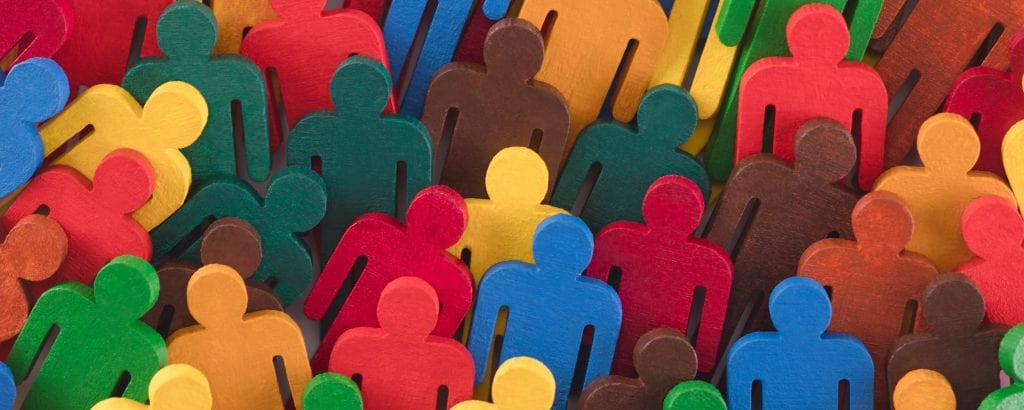June is Pride Month, an annual celebration that shines a bright light on issues related to diversity, equity and inclusion (DE&I). As a result, DE&I may be top of mind for HR professionals concerned about workforce management, productivity and engagement.
DE&I Impacts Performance
The strongest companies are those where employees feel safe and appreciated for who they are and what they bring to the table. That’s why diversity, equity and inclusion efforts in the workplace are a top priority for many employers. For example, McKinsey studies have shown that companies with more than 30% of women executives were more likely to outperform companies where this percentage ranged from 10 to 30% sometimes by almost half. Companies with racial or cultural diversity outperformed others by up to 36%. While these benefits of diversity have been proven, most companies don’t have a formal plan to be more diverse, equitable or inclusive.
According to Josh Bersin analysts there’s lots of progress to be made.
- Fewer than 12% of companies recognize senior leaders for inclusion or diversity goals.
- Less than a third (32%) of companies require any form of DE&I training for workers and only 34% offer managers such training.
- DE&I is treated as more of a compliance issue as 75% of companies surveyed do not include DE&I in leadership development or overall learning and development.
What is DE&I?
DE&I is a concept that broadly outlines the efforts an institution takes to create a more welcoming environment for people of different identities, according to YW Boston, an organization dedicated to eliminating racism, empowering women, and promoting peace, justice, freedom and dignity for all. DE&I efforts could mean taking extra steps in your hiring process to ensure individuals of various races, genders, ages, abilities and sexual orientations are treated equitably when being considered for a position. And, this extends to creating career development paths that don’t limit or target advancement to only certain types of people. It could mean creating mentorship opportunities for young professionals which can help create opportunities to develop professional networks among diverse individuals. YW Boston notes that although DE&I are grouped together, they each have different meanings. Independent Sector a national organization that advocates for public policy provides the following definitions.
- Diversity “includes all the ways in which people differ, encompassing the different characteristics that make one individual or group different from another,” including identity markers such as race, ethnicity, gender, disability, sexual orientation, religion and others. It also takes intersectional diversity into account, when people’s identity is made up of a number of underrepresented identities.
- Equity is “fair treatment, access, opportunity and advancement for all people, while at the same time striving to identify and eliminate barriers that have prevented the full participation of some groups. Improving equity involves increasing justice and fairness within the procedures and processes of institutions or systems, as well as in their distribution of resources.”
- Inclusion is “the act of creating environments in which any individual or group can be and feel welcomed, respected, supported and valued to fully participate. An inclusive and welcoming climate embraces differences and offers respect in words and actions for all people.” Inclusion goes beyond diversity, because once you have a diverse staff, organizations must focus on retention.”
Make Sure Your DE&I Plan Measures Up
Even as many companies agree a DE&I plan is necessary, they might not know where to begin or how to sustain progress.
According to SHRM, developing DE&I initiatives involves four main phases:
- Data collection and analysis to determine the need for change.
- Strategy design to match business objectives.
- Implementation of the initiative.
- Evaluation and continuing audit of the plan.
And while these steps may seem similar to other strategic initiatives, when it comes to DE&I, leadership is key to making change happen.
The Center for Creative Leadership (CCL) provides a framework for taking action on DE&I. These steps can be used to shift mindsets, behaviors and practices to make your workforce more equitable and inclusive.
- Reveal relevant opportunities. Discover what your organization can offer to create a more diverse workforce. CCL notes that what works for other organizations may not work for yours. Company leaders should take the first steps in identifying how DE&I plays into the company’s identity, values and culture and how it will impact individuals, teams and the organization. Once senior leaders are engaged, they can spread that engagement to others in the organization to identify relevant opportunities.
- Elevate equity. As mentioned above, diversity, equity and inclusivity aren’t interchangeable terms. And, according to CCL, without equity, diversity and inclusivity efforts won’t be sustainable. Equity ensures all people receive fair opportunities. CCL notes when leaders express their motivation and equity barriers, set goals towards meeting greater equity and then take action, they show the rest of the organization they’re committed to diversity and inclusion.
- Activate diversity. Diversity is all of the ways people differ. Activating diversity involves recognizing and engaging those differences. CCL recommends that managers and teams explore the impact of diversity on perspectives, assumptions and approaches and identify ways to enhance everyone’s contribution. This is especially important as Gallup research found only 42% of US managers strongly agree that they are prepared to have meaningful conversations about race with their teams.
- Lead inclusively. Being an inclusive organization means your DE&I efforts must be active, intentional and ongoing to make sure everyone feels like they belong. Policies, like a DE&I plan, help cement those efforts. Leaders should be able to recognize and mitigate bias, respect differences, build empathetic relationships, foster allyship, manage conflict and bring out the best in others, according to CCL.
Companies that are diverse, inclusive and treat employees equitably are better places to work and they benefit from increased productivity and success. They may also be better able to retain valuable employees. At the end of the day, DE&I isn’t just the right thing to do, it’s good for business…during Pride Month and beyond.




